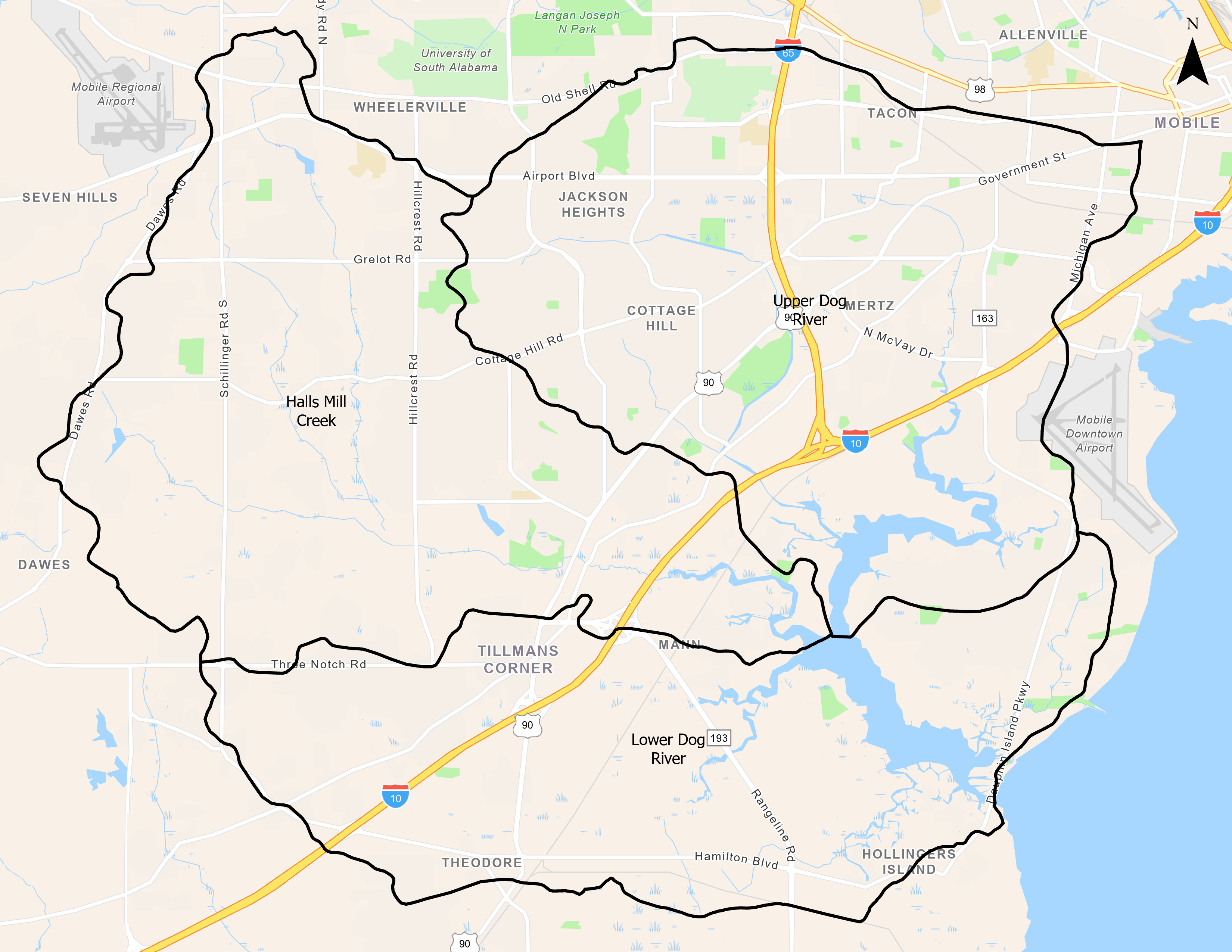The Landscape

Size, Location & Land Use
The Dog River Watershed covers 55,000 acres in southwest Mobile County. The northern portion of the watershed includes part of downtown Mobile and is highly urbanized. Total land use breakdown: 37% suburban, 37% forested land, 16% urban, 5% wetlands/water and 5% other uses.
Main Tributaries and Tidal Influence
Upper Dog River (HUC 031602050202), Lower Dog River (HUC 031602050202) and Halls Mill Creek (HUC 031602050204); Dog River drains six sub-basins (Eslava Creek, Robinson Bayou, Moore Creek, Halls Mill Creek, Rabbit Creek and Rattlesnake Bayou) and three other major tributaries (Montlimar Creek, Bolton Branch and Alligator Bayou). Both Dog River and the downstream portion of Rabbit Creek are tidally influenced.
Water Use Classification and Impairments
ADEM classifies the lower portion of Dog River, from its confluence with Halls Mill Creek to its mouth at Mobile Bay, for use as Swimming & Whole Body Contact. The upper portion of Dog River and its tributaries are classified for Fish & Wildlife. Two approved TMDLs for Organic Enrichment/Dissolved Oxygen, Two approved TMDLs for Pathogens, 303(d) listed for sedimentation (TMDL scheduled for 2018). The watershed is significantly impacted by nonpoint source pollution, including sedimentation from erosion, litter from stormwater runoff, nutrient enrichment and elevated levels of fecal coliform bacteria.
Human Uses
Dog River and its tributaries provide excellent fishing, boating, kayaking, bird watching, and swimming opportunities. Access points consist of 1 private paid-access boat launch, 2 public boat launches and multiple marinas and full-service boat yards. The recently developed Dog River Scenic Blueway serves as an eight-mile-long paddling trail with multiple kayak/canoe launches.
Ecological Importance
Data on sediment chemistry, bed loads, and water quality show that Moore Creek, Halls Mill Creek and the upper section of Dog River have been severely affected by land use change and anthropogenic activities. Rabbit Creek and the lower portions of Dog River possess fairly diverse and productive habitats but also show some signs of factors affecting other sites. USFWS documented T&E Species: Florida manatee (Trichechus manatus latirostris), Alabama red-bellied turtle (Pseudemys alabamensis) and Gulf sturgeon (Acipenser oxyrinchus desotoi).




